These days, with so many DIY programs out there like Canva, people feel they can be graphic designers. We are all for empowerment so go for it!
But what happens when you go to print? You can get mixed results if you don’t know exactly how to specify to the printer what you want the piece to look like.
Understanding how to talk shop is important for business because it can save you money by preventing botched print jobs. Remember – it is almost never the printer’s fault!
The process of specifying these options is called Pre-Press. In an agency, the person who does this job is called a Production Artist. Often, graphic designers know how to do this, but nowadays, with so many designers only employed in digital output, this has almost become a lost skill.
Here are the specifications your printer needs to prepare the job the way you need it to be done:
Bleed
Any element that extends up to or past the edge of a printed page.
A4 Paper
ISO standard paper size 210 x 297mm or 8.3 x 11.7″. The common paper size used outside the US in place of 8.5 x 11.
C1S and C2S
Abbreviations for Coated One Side and Coated Two Sides paper stock.
Crop marks
Small printed lines around the edges of a printed piece indicating where it is to be cut out of the sheet. Sometimes they are referred to as cut marks.
Die-Cutting
The process of cutting paper in a shape or design by the use of a wooden die or block in which are positioned steel rules in the shape of the desired pattern.
Lamination
Applying thin transparent plastic sheets or a coating to both sides of a sheet of paper, providing scuff-resistance, waterproofing, and extended use. Sometimes lamination is added for enhanced tactile quality such as satin or silk lamination.
PMS
The abbreviation of the Pantone Color Matching System.
Ppi
Pixels per inch.
Dpi
Dots per inch. A measure of resolution.
CMYK
Refers to the four ink plates used in colour printing: Cyan, Magenta, Yellow, Key (Black). Each colour must have a number indicating the amount of that ink used.
Print Ready Files
Everything must be in CMYK colour (including photos). Not sure if your photos are CMYK? Here’s some easy steps:
- Open them in photoshop and switch the colour settings to CMYK.
- Export the picture into a jpeg or png and place it into your Working CMYK file on illustrator, indesign, or any other design programs.
- Make sure to select the “press quality” option when exporting the final artwork.
The PANTONE Colour Chart
Pantone is a standardized color matching system, utilizing the Pantone numbering system for identifying colors. By standardizing the colors, different manufacturers in different locations can all reference a Pantone numbered color, making sure colors match without direct contact with one another. PANTONE is the industry standard in colours and is best used for reference when printing.
Bleed and crop marks
Unless you are using a template supplied by your printer, you will most likely need to add bleed and crop marks when exporting your artwork. This ensures the printer knows where to cut and adds as another safety measure for mistakes.
Always ask your printer for samples or recommendations
All printers are different. This is why it’s important to ask your print shop for information and get samples before committing to a big print-off. Annoyed about asking for samples all of the time? Use your at-home-printer to compare with the print shop colours. If you’re lucky, the colours would come up very close. If so, you may use your own at-home-printer for testing colours before sending it to the print shop.
The safest scenario is to purchase a PANTONE Colour Bridge Guide (Coated & uncoated). This provides designers information about solid Pantone colours and how they translate to CMYK.
Paper varieties
Wide variety of thicknesses. Check link.
Most common paper types are uncoated & coated. Uncoated is a stock that has not been coated with a sealant resulting in a dry and dull print. This is great for text-based projects. Coated stocks are a bit more complicated as there are different types: (in order of least shine to shiniest)
Matte
Matte-coated paper is a non-glossy, flat-looking paper with very little sheen. Matte papers are more opaque, contain greater bulk, and are higher in cost. The coating still keeps much of the ink from being absorbed by the paper, which produces excellent, vibrant color. For both text and image-based projects.
Dull
Dull-finish-coated paper is a smooth surface paper that is low in gloss. For both text and image-based projects.
Satin
A satin coating is a less shiny coated finish. Colours are sharp and vivid. Suitable for image-based projects. Satin feels soft to the touch; not to be confused with “soft touch” which is also sometimes referred to as “suede” – this finish can have a nap (change darkness depending on the direction of light) and almost “catches” your skin when you touch it.
Gloss
A Gloss-coated paper has a high sheen. Gloss papers have less bulk and opacity and are typically less expensive than dull & matte paper of equal thickness. Gloss coatings reduce ink absorption, which gives the sheet an excellent color definition. For image-based projects.
Your printer cannot work with files presented as .png, Word Doc, low res PDF, screenshots, .psd, or .gifs. They will need a high res PDF (with fonts saved as outlines), a .eps, or sometimes Adobe InDesign or Illustrator files.
Now that you can talk shop, you can better understand the needs of your business and plot your next steps. That’s where we come in. Email our marketing team today and we can help put your plans to fruition. Let us help you grow your business!
